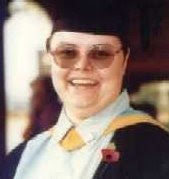The Silmarillion - J R R Tolkien
It was on September 15, 1977 that some of the long labour of Tolkien's son Christopher saw fruit as The Silmarillion was published. For those who have never read it (and I hadn't until just last summer), a word of warning: The Silmarillion is not a straightforward narrative, and it certainly isn't a 'There-and-Back-Again' tale. Instead, it is a collection of tales or groups of tales, as follows:
The Ainulindalë tells of the creation of Eä, Tolkien's universe.
The Valaquenta is a brief description of the Valar and Maiar, the supernatural beings of Tolkien's universe (Gandalf and Sauraman are Maiar).
The Quenta Silmarillion is the history of the events before and during the First Age, and forms the largest section of the collection.
The Akallabêth is the history of the Second Age.
Of the Rings of Power and the Third Age is a fictional historical essay that deals with the preamble to the events described in The Lord of the Rings, and the events of LotR themselves, but told in the style of The Silmarillion.
I first tried reading The Silmarillion at the age of 15, having fallen totally under Tolkien's spell with my reading of LotR, but no one had warned me that it was nothing like LotR, and I wasn't prepared for the change in style or the lack of an ordinary narrative. By the time I came to read it just over 20 years later, I knew that the narrative was akin to the Pentateuch since The Silmarillion is Tolkien's introduction to Arda, the world of which Middle-earth is but a small part.
Tolkien began writing some of the material that appears in The Silmarillion as early as the 1920s, but it was not until after his death that it saw print. He had submitted a more extensive version of the material to his publishers, Allen & Unwin after the success of The Hobbit, but A&U's reader felt it was "too Celtic" and obscure, so Tolkien turned instead, to writing LotR, although the latter text suffered hiatus after hiatus because Tolkien preferred to work on the Simarillion material. In the end, though, he died with the work unfinished and his son Christopher, under pressure from A&U and his father's readers, produced The Silmarillion, although he later admitted that he had more time and less pressure, he would probably have produced something rather different. More of the material that was not included in the published version, was later included in the volumes of material, The History of Middle-earth, which Christopher also collated and published.
Whilst The Silmarillion is not an easy text for many people, it is worth making an effort to read, if for no other reason than that it gives in full things that are only partially explained or mentioned in passing in The Lord of the Rings, such as the Tale of Beren and Luthien, which Aragorn recites to the hobbits en route from Bree to Rivendell. I know I won't read this text every year, as I do LotR, but I will definitely read it again, and I'm told it is worth re-reading.


3 comments:
Yeah, so I tried to read this when I was 12 or 15 or something. I think I don't have my copy anymore, which is too bad as I'm now old enough and well-read enough to deal with it (I think!). Interesting. Maybe I'll take a peek if I can wade out from under the pile of other books I need to read! Can't quite get into Robin Hobb's second book, ROYAL ASSASSIN...someday soon, I gather. On a rainy day.
Hey Suzi, welcome back to the electronic world ! I have missed your posts here and on your LJ...
It's a fact that The Silmarillion is not everyone's cup of tea, even if they're a Tolkien fan. It didn't bother me for 20 years that I hadn't read it, and I think I would not have read it last year if I had not been on such an intensive Tolkien-reading kick back last summer...
As to Royal Assassin, that's actually the first book, not the second !
Yikes ! Your reading WILL go do at this rate... I owe you an apology - Royal Assassin is the second book - it's Assassin's Apprentice that was the first. (*bangs head on wall, "Bad Sass"*)
Funnily enough I'm re-reading F&H again - last night I was too tired to start a new book as complicated as Vellum is reputed to be (at least according to the review I read). Looking forward to the F&H discussion with other Child_Lit folks.
Post a Comment